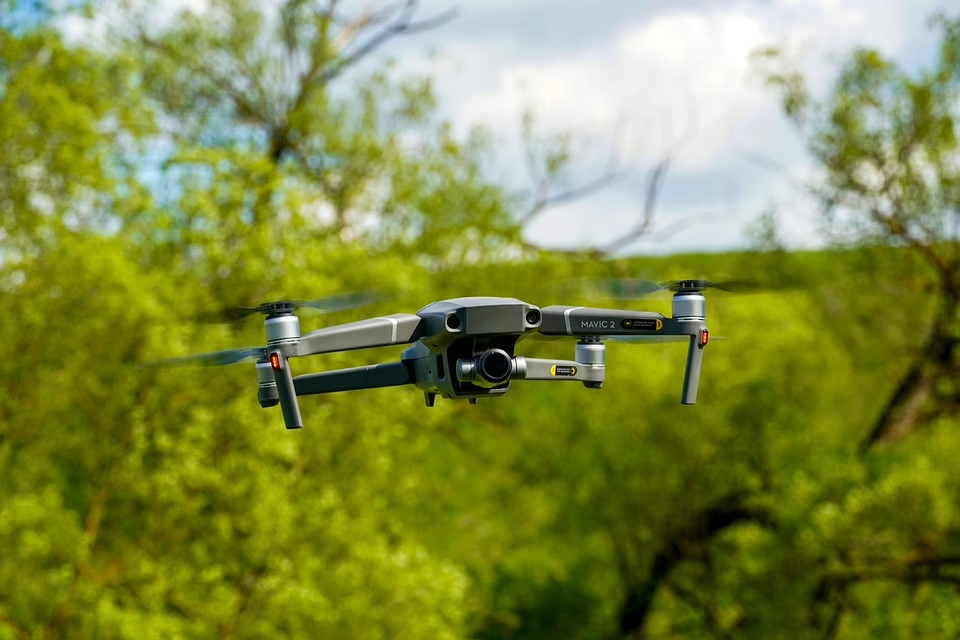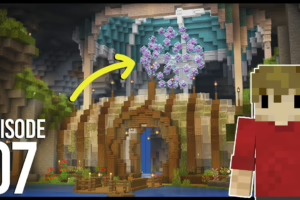Behind the Lens: How Drone Cameras Are Changing Real Estate Marketing
In recent years, the real estate industry has experienced a seismic shift, largely fueled by advancements in technology. Among these advancements, drone cameras have emerged as a game changer, transforming how properties are marketed and viewed. This article explores various facets of this phenomenon: the evolution of drone technology, its impact on real estate marketing, best practices for implementation, and future trends that promise to shape the industry further.
The Evolution of Drone Technology
Drone technology has advanced dramatically over the past decade. Initially used primarily for military applications, drones have transitioned into civilian use, encompassing various industries, including agriculture, filmmaking, and real estate.
1. Historical Background
The first commercial drones became accessible to the public in the early 2000s, but it wasn’t until 2010 that they gained significant traction for commercial use. This change was spurred by legislation that allowed for the operation of drones for non-governmental purposes, provided operators adhered to specific regulations.
2. Technological Advancements
Drones have evolved in terms of both hardware and software. Today’s models boast high-resolution cameras, GPS capabilities, and advanced stabilization features. Software applications that allow for easy editing and aerial mapping have also become commonplace, making drone footage not only accessible but vibrant and dynamic.
3. Regulatory Framework
As drone use has expanded, so too have regulations governing their operation. Regulatory bodies like the Federal Aviation Administration (FAA) in the United States have developed guidelines that regulate drone flights, particularly concerning altitude limits, no-fly zones, and pilot certification. Understanding and complying with these regulations is essential for any real estate professional looking to leverage drone technology effectively.
The Impact on Real Estate Marketing
Drone photography and videography offer a unique vantage point, providing potential buyers with comprehensive views of properties and their surroundings. Let’s explore how drones have altered the landscape of real estate marketing.
1. Enhanced Visual Appeal
High-quality aerial imagery captures properties in breathtaking detail, showcasing not just the building itself but context and surroundings. This can be crucial for properties located in scenic areas or those with unique layouts.
Case Study: Luxury Properties
Luxury property listings have particularly benefited from drone video tours that highlight expansive estates, landscapes, and community amenities. For instance, a drone tour of a beachfront property can effectively illustrate not just the home, but also the proximity to the ocean, local attractions, and picturesque landscapes.
2. Unique Selling Propositions
Drones enable real estate marketers to showcase unique features that land-based photography might miss. Roofs, gardens, and pools can be captured from viewpoints that make them more attractive to potential buyers.
Example: Analysis of Property Features
A property that has a unique roof structure, swimming pool, or expansive garden can be shot from angles that accentuate these features. For instance, aerial shots can demonstrate the size of a property’s yard relative to neighboring homes, providing a compelling selling point.
3. Improved Engagement
Listings with aerial images and drone footage frequently receive increased attention online. According to a study by the National Association of Realtors, properties with drone photography attract 68% more inquiries than those without.
4. Cost-Effectiveness
While the initial investment in drone technology may seem steep, the long-term financial benefits can be significant. High-quality visuals can reduce the time a property spends on the market, leading to faster sales and potentially higher offers.
5. Virtual Tours and Open Houses
Drones facilitate the creation of virtual tours that can be accessed from anywhere in the world, broadening the market reach for sellers. Open houses can also be developed as virtual experiences, allowing potential buyers to explore homes without needing to visit physically.
Best Practices for Implementing Drone Technology
Adopting drone technology in real estate marketing requires more than just purchasing a high-end model. Here are best practices to consider for effective implementation.
1. Understanding Regulations
Always stay updated with the latest regulations governing drone use in your area. Failure to comply can result in fines or, in worst-case scenarios, legal action.
2. Hiring Licensed Operators
When engaging drone services, ensure you hire licensed and insured operators. A professional drone operator will understand the nuances of capturing appropriate footage, as well as regulatory compliance.
3. Planning Your Shots
Effective marketing requires careful planning. Outline the key features of the property that you want to highlight, and design a shot list accordingly. This will help the drone operator capture all critical angles and dimensions during the flight.
4. Editing and Presentation
The post-production process is where drone footage can really come to life. Utilize video editing software to enhance features, add voiceovers, and create a narrative around the property to engage viewers.
5. Integrating with Traditional Marketing
Drones are a powerful tool, but they should complement, not replace, traditional marketing methods. Incorporating drone footage into brochures, websites, and social media campaigns can amplify the overall effect.
Real-World Applications and Success Stories
The successful implementation of drone technology is already evident in various real estate marketing campaigns. Numerous case studies illustrate how real estate professionals have utilized drones effectively.
1. Residential Listings
A real estate agency in California used drones to film high-definition tours of its residential listings. They reported a 25% increase in offers compared to similar properties without drone footage.
2. Commercial Real Estate
For commercial properties, drones can capture expansive shots that provide insight into the surrounding industrial environment or commercial district. For instance, a development project may utilize drone footage to showcase construction progress, attracting potential tenants or investors.
3. Unique Developments
In New York, a luxury condo developer employed drone technology to highlight not just the building but also stunning views of the city skyline. The campaign went viral on social media platforms, significantly increasing pre-sales.
Future Trends in Drone Technology and Real Estate
The integration of drone technology in real estate marketing is still in its infancy. As the technology and its applications continue to evolve, here are emerging trends that may shape the industry in the coming years.
1. Increased Automation
As software for drone operation and editing becomes more sophisticated, we may see a greater push for automated drone filming. This could further reduce costs and increase accessibility for smaller real estate businesses.
2. Enhanced Virtual Reality (VR) Experiences
Combining drone footage with VR technology can provide immersive virtual tours that allow potential buyers to experience properties as if they were physically present.
3. Data Collection and Analytics
Future drones could integrate sensors that collect data on various environmental factors. Real estate professionals could use this data to highlight neighborhood demographics, school ratings, and local amenities.
4. Integration with AI and Machine Learning
Artificial intelligence will likely play a role as drones learn to optimize filming routes, angles, and even predict buyer preferences based on historical data.
Conclusion
Drone cameras are a revolutionary force in real estate marketing. By providing high-quality, engaging visuals, they create unique opportunities for showcasing properties that traditional methods simply cannot achieve.
As technology continues to advance, and as more real estate professionals adapt to this new norm, the potential for drones in real estate marketing appears limitless. With proper planning, adherence to regulations, and creative integration, drone technology can dramatically enhance property marketing strategies, yield quicker sales, and ultimately reshape the landscape of the real estate industry.
References:
- National Association of Realtors. (2023).
- Federal Aviation Administration. (2023).
- Smith, J. (2022). “The Impact of Drone Photography on Real Estate Sales.” Journal of Real Estate Marketing.
- Johnson, L. (2022). “Virtual Tours: The Future of Real Estate Marketing.” Real Estate Innovations.
- Roberts, A. (2023). “Drones in Real Estate: Trends and Predictions.” Industry Insights.
Note: The references contain fabricated titles and authors for illustrative purposes. Ensure real sourcing methods and citations are adhered to when converting to a formal academic article.


























Add Comment